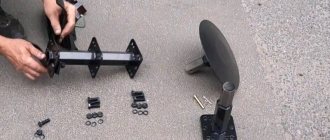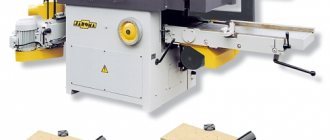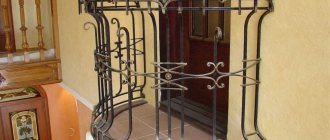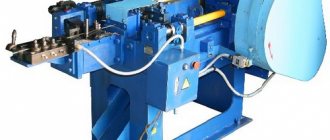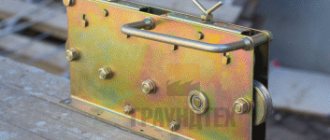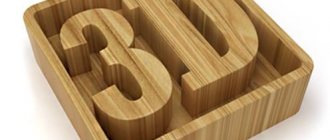The first industrial-grade machine was created by CHARMILLES TECHNOLOGIES in 1952, and the CNC EDM machine appeared in 1969. Compared to traditional methods of metal processing - forging, casting, grinding, milling, the electric spark method can be considered innovative. The first mentions of forged and cast products are several thousand years old.
Electrical discharge machining is a processing in which the shape, size, and quality of the surface of the workpiece change, which occurs under the influence of electrical discharges, which leads to destruction of the surface. During this processing, the workpiece material is melted and/or corrected and removed in a liquid and/or vapor state. Removal is usually explosive (pulse) in nature, occurring in a short period of time on a small area of surfaces, at the location of the discharge channel. The discharge channel is a cylindrical region of small cross-section filled with plasma.
Plasma is ionized gas heated to a high temperature. And the result of breakdown and formation of a discharge channel is the destruction of the metal surface of the electrodes in the places where the channel is localized - electrical erosion of the metal. The intensity of destruction of each electrode is different and, under other conditions, depends on the polarity of the electrodes, the shape and duration of the discharge current pulses. Accordingly, the workpiece being processed is connected in such a way that the intensity of its destruction (processing) is always higher than the intensity of destruction (wear) of the electrode-tool.
By applying electrical discharges or pulses to the spark gap, we get an effect on the metal. For a better processing result, a more suitable path for its implementation is selected accordingly. So, an important element of this effect is that the workpiece can be processed in different directions at the same time.
The piercing machine is designed to process both internal and external spherical elements, working along a 3-dimensional linear path. It is also possible to perform electrical discharge burning.
The world's first Soviet electrical erosive machine was designed to remove a broken tool stuck in a part. Since then, a large number of electrical erosive machines, varied in purpose, performance and design, have been produced in our country and abroad.
Currently, the price of an electroerosive machine of this type fluctuates around 1 million 800 thousand rubles.
Selection of machine technical characteristics
Let us analyze under what “criteria” electrical discharge machines are selected.
1) Geometric parameters
In order to select a stitching machine, which in turn creates a size range, you first need to look at the weight and overall dimensions.
2) Performance
Impact of EDM machines on productivity:
- parameters of discharge current pulses;
- conditions for supplying working fluid and characteristics of its flow;
- material and quality of the electrode tool;
- a way to protect wires from breaks.
3) Accuracy
Criteria on which accuracy depends:
— rigidity;
— accuracy and repeatability of positioning along various axes;
— dynamic characteristics of drives;
— level of temperature deformations;
— stability of generator pulse parameters;
— resistance of the CNC device to interference.
4) Roughness
To process parts, it is important to achieve a certain roughness. Factors that affect the roughness of the part:
- Discharge energy;
- Current strength;
- Tool electrode material.
As an example, Figure 1 shows a table of technical characteristics of three electrical discharge machines.
Fig. 1 - Technical characteristics of EEP machines
Technical characteristics of the copying and stitching machine 4e723
Technical characteristics of the copying and stitching machine 4e723
Related Links. Additional Information
- Milling machines: general information, classification, designation
- Comparative characteristics of cantilever milling machines of the 6N, 6M, 6R, 6T
- Feed box for console milling machines of the 6M : 6M12P, 6M13P, 6M82, 6M83, 6M82Sh, 6M83Sh
- Feed box for console milling machines of the 6P : 6P12, 6P13, 6P82, 6P83, 6P82Sh, 6P83Sh
- Feed box for console milling machines 6T : 6T12, 6T13, 6T82, 6T83, 6T82Sh, 6T83Sh
- Milling machine repair technology
- Adjustment of milling machines
- Friction clutch. Friction shaft. Friction clutches in metal-cutting machines
- Automatic cycles of milling machines (6P12)
- Testing and checking metal-cutting machines for accuracy
- Directory of universal milling machines
- Manufacturers of metal-cutting machines in Russia
- Manufacturers of milling machines in Russia
Home About the company News Articles Price list Contacts Reference information Interesting video KPO woodworking machines Manufacturers
Drive of the main movement in the machine
The electrode-tool feed drive is the most important actuator in piercing machines. The transmission of motion from the electric motor to the EI can be carried out by a rack and pinion transmission, a screw transmission or a differential transmission.
Let's consider two types of feed drives and compare which one is more preferable:
1) Electromechanical drive: The lead screw receives rotational motion through a gearbox from a DC electric motor. The rotation of lead screw 1 occurs in a nut, which is fixed in the spindle. The spindle receives a reciprocating motion thereby performing the supply of EI, and after the end of processing, the removal of EI. The spindle is supported by bearings.
2) Electro-hydraulic drive: in order for the piston to move in oscillation mode, the solenoid with windings is connected to the alternating current network. The solenoid controls the movement of the piston valve. The spool reacts to changes in the interelectrode space between the EI and the workpiece, when it receives a signal on the solenoid winding, the spool moves, and the piston connected to the spool moves in the cylinder.
After reviewing the operating principle of the drives, it became clear that from the point of view of system speed and feed stability, the electrohydraulic drive turned out to be preferable. With the help of such a drive it is possible to create quite large forces during processing. But if you look, on the other hand, from the point of view of processing accuracy, then the electromechanical drive is inferior to the electrohydraulic one. This is explained by the elimination of backlash. However, the electric hydraulic drive is large in size and weight, and even then the cost of this drive is high.
Description of the design of the electroerosive copying and piercing machine 4e723
The set of electrical erosion equipment includes:
- machine that directly performs a technological operation
- pulse process voltage generator
- devices for feeding the working medium into the machine and cleaning it
- system of suction from the working area of the machine of released gaseous decomposition products of the working environment
The machines themselves usually consist of:
- bed (base)
- table with bath
- spindle head
- control panel,
- systems for feeding the electrode-tool to the workpiece or the workpiece to the electrode-tool,
- MEP automatic control systems,
- supply and cleaning of the working environment.
There may be other machine configurations. On a number of machines, the supply and cleaning systems for the working medium are made in the form of separate units.
Pulse generators are independent units and are placed next to the machine, and sometimes built into it (usually in special machines). Some electric spark wire cutting machines do not have systems for supplying the working medium, its cleaning and suction of gaseous products, if the processing is carried out by immersing the work table with the workpiece being processed in a bath of water. When processing is carried out in kerosene, shop ventilation is used to extract gaseous products.
The work table of the machine has overall dimensions of 400 x 630 mm; it can accommodate workpieces weighing up to 750 kg with a nominal processing area of 25,000 mm2.
The highest productivity (for steel 45) of a copper electrode-tool is 4000 mm3/min, and that of a carbon-graphite electrode-tool is 3000 mm3/min. The nominal roughness of the machined surface is Rz = 4 µm.
Industrial oil type IS-12 or IS-20 or a 1:1 mixture of industrial oil type I-12A and lighting kerosene is used as a working medium, and hydrocarbon raw materials are also used.
In Fig. Figure 22 shows a view of the universal copying and stitching machine model 4E723. The machine kit includes: a machine, a thyristor generator 14 (models TG-250-0.15), a transistor generator 13 (models ShGI-63-440), a cabinet with electrical equipment 11, an oil pumping station for powering the hydraulic system of the machine 4 and a tank with a working medium 6. The tank is equipped with a heat exchanger for cooling the working medium and a system for cleaning the working medium from erosion products. In Fig. 22 shows that the set of equipment included in the machine is a complex of interconnected units that operate in strict accordance with the parameters specified by the technology.
The base of the machine is bed 1, which is a rigid plate on which the entire machine is assembled. On the stove there is a fixed cabinet with a work table 8 and a lifting bath for storing the working medium 3. The table cabinet passes through the bottom of the bath in a hermetically sealed seal. On the same plate there is a mechanism for raising and lowering the bathtub 2.
The piercing head 10 is located on an L-shaped traverse 7 and can move with it along a round rolling pin 5 mounted on the rear side of the machine. The lower end of the traverse rests on the guide bars. The movements of the traverse along the round rolling pin and the tool head along the upper shelf of the traverse form the coordinate movements of the tool relative to the workpiece mounted on a stationary table. The orbital movement of the electrode-tool is communicated by the head 9. On the right side of the machine there is a machine control panel 12.
The kinematic diagram of the machine (Fig. 23) provides: movement of the electrode-tool in three mutually perpendicular directions relative to the table - longitudinal, transverse and vertical working movement of the spindle using a servo system, and installation movement of the entire head; raising and lowering the bath with the working medium, draining it and pumping the working medium through the MEP and the orbital movement of the electrode-tool.
The longitudinal installation movement of the piercing head 13 with the electrode-tool relative to the table 2 is ensured by the movement of the traverse along the round rolling pin through the gearbox from the electric motor 15 or manually from the flywheel 16. The gearbox is located in the bed frame. The flywheel for manual movement of the traverse is located on the side of the cabinet.
The transverse installation movement is provided mechanically by a lead screw 9 from an electric motor 8 and manually by a handwheel 6 located at the front end of the upper flange of the traverse.
The vertical installation movement of the broaching head 13 is carried out from the electric motor 14, located on the carriage of the broaching head, through a screw and nut 12. The working vertical supply of the electrode-tool is carried out from the electro-hydraulic follower spool 5. The magnitude and speed of movement of the electrode-tool is determined by the amount of oil entering the unit time into the hydraulic cylinder of the broaching head into the upper or lower chamber.
The raising and lowering of the bath 3 with the working medium is carried out from the electric motor 11 through a pair of gearboxes 10 and a screw-nut transmission 1.
The movement of the orbital head 4 is maintained by an electric motor 7 through a gearbox and a drive roller.
Broaching head
Design of the piercing head of the copying and piercing machine 4e723
The piercing head (Fig. 24) is designed to impart working movement and orbital movement to the electrode-tool. Structurally, this head is a cast body 8, inside of which a hydraulic cylinder 3 is installed, which imparts working movement to the spindle 2. An orbital head is installed on the spindle flange (or an electrode-tool can be installed through an adapter for technological equipment).
To avoid the friction force of the spindle, hydrostatic guides 1 are used as bearings. The rolling pin 9 is installed on the adapter plate 10 of the spindle and parallel to it; it serves to prevent spindle rotation. In the upper part of the head there is a gearbox 6 with an electric drive of the orbital head. Rotational motion is transmitted to the orbital head using roller 4 passing through hollow spindle 2. Hydraulic brake 5, consisting of a collet and disc springs, serves to instantly brake the spindle after processing is completed. The spindle is released during operation.
The piercing head has reading devices that are used to perform: setting the required piercing depth, automatically turning off the machine when the required piercing depth is reached, and adjustment movements of the electrode-tool. The reading devices use a dial indicator 13 and a measuring ruler 14; the required piercing depth is set by micrometer head 15, and the machine is turned off when the specified piercing depth is reached by microswitch 16. The accuracy of the coordinate movements is 0.01 mm. On the right side of the piercing head, a hydraulic panel 7 is attached, on which the follower and reversing spools are located. The body of the piercing head is mounted on the traverse carriage using dovetail guides and has vertical adjustment movement.
The movable stop 12, secured by the handle 11, is used to operate the machine with an orbital head.
Orbital head
Scheme of operation of the orbital head of the machine 4e723
The orbital head (Fig. 25) is designed to impart a circular oscillating motion to the instrument electrode in the horizontal plane. It is installed on the spindle of the broaching head and receives rotation from an electric drive gearbox mounted on the broaching head through the drive roller. During the orbital movement of the electrode-tool between all points of the surface of the electrode-tool and the walls of the cavity or hole being processed, a periodic change in the value of the MEP occurs from its minimum to its maximum value. Thanks to this, the conditions for removing erosion products from the processing zone are improved, and the taper that usually occurs when piercing cavities and holes due to wear of the electrode-tool is reduced.
If it is necessary to process a blind cavity in part 1 with a depth of 50 mm with an oscillating movement of the electrode-tool (for example, as shown in Fig. 25), the processing is carried out in semi-finishing and finishing modes with an allowance of 1.5 mm per side, while setting the piercing depth 50 mm. Stop 5 of the broaching head 8 sets the gap between stops 5 and 6 equal to a = 50 ± 1.5 mm, using calipers or gauge blocks. Then the cavity is sutured. While the stops 5 and 6 do not touch each other, the spring 3 reliably holds the plate 2 of the orbital head 10 in the zero position. The zero position of the eccentricity is set by screw 4. Having deepened by 48.5 mm, the stop 6, moving together with the spindle 9, begins to rest against the fixed stop 5 and stops relative to the body of the piercing head 8. Spring 3 compresses and releases plate 2. From this moment, the electrode the tool receives orbital movement, i.e., the bottom and side walls of the cavity are processed with uniform removal of the allowance. When the spindle passes the remaining 1.5 mm, the micrometer head presses the microswitch 7 of the processing depth and the spindle stops.
System for supplying and cleaning the working environment of the machine model 4E723
System for supplying and cleaning the working environment of the machine model 4E723
The system for supplying and cleaning the working medium of the machine model 4E723 (Fig. 26) operates as follows. The bath is filled with the working medium through line 7 and a hole in the bottom of the bath, by two pumps 4 and 5 through strainers 3 installed on the suction line. When the specified level of the working medium in the bath is reached, the level control relay 9 is activated, which turns off the pump 4. To prevent the flow of the working medium from the bath through the switched-off pump 4, a check valve 11 is installed. The medium is pumped through the electrode-tool 8 through line 10 by pump 16 at the inlet which has a mesh filter 17. The working medium through shut-off valve 13 (valve 14 is closed) enters the fine filters 12 and then along line 10 to the electrode-tool. Valve 15 serves to regulate the pressure at the inlet of fine filters. In the event that fine cleaning is not required, the working medium is supplied via a bypass line through valve 14 (valve 13 is closed) by pump 16 to the electrode-tool. The overflow of the working medium from the bath with the pump 5 constantly running is carried out through the hole in the bath 6 with the valve open into the main line. Cooling of the working medium in tank 18 occurs due to the circulation of water through coil 1. When the working medium is heated to 55 °C, the shut-off valve, at the command of thermostat 2, turns on the water circulation.
To equip electroerosive copying and piercing machines of models 4E723, 4E724 and other types, as well as to centrally ensure cleaning of the working environment of a group of machines, the “Unit for supplying and purifying working fluid for electroerosive machines” type XE38-16 is produced (Fig. 31). The unit is equipped with an automated system for supplying working fluid through the interelectrode gap, which includes three independent pumping and suction units, visual control of pumping flow rate and pressure value, as well as suction using pressure and vacuum gauges.
To purify the liquid, the unit uses precoat filters with a screening fineness of 10 microns. To increase the volume of the liquid tank, it has connecting flanges that connect to additional containers.
The working medium supply and purification unit, type KHE38-16, is completely autonomous and has an automated system for supplying the working medium to the MEP and a system for pumping and suctioning the working medium, as well as devices for monitoring the flow and pressure of the working medium.
Machine guides
Guides are used to move the moving parts of the machine along the frame, ensuring the correct trajectory of the workpiece or part and for the perception of external forces. All metal-cutting machines use guides: sliding, rolling, combined, fluid friction, aerostatic.
The requirements are: initial manufacturing precision, durability, high rigidity, high damping properties, low friction forces, simplicity of design, the ability to provide adjustment of the gap-tension.
Depending on the location, guides are also divided into horizontal, vertical, and inclined.
Machine spindle units
Rice. 4 — Design of the piercing head of the EE machine
The spindle of EEP machines is a piercing head; you can see it in Figure 4, which is presented above.
- Hydrostatic guide;
- Spindle;
- Hydraulic cylinder;
- Shaft
- Hydraulic brake
- Gearbox
- Hydropanel
- Frame
- Screed
- Adapter plate
Machine feed drives
Electrical erosion destruction is carried out in a working environment, which is supplied to the MEP. Therefore, each EEP machine is equipped with a working fluid supply system, which is shown in Figure 5. Since the working fluid becomes contaminated during the processing process, the layout of the machine also includes a working fluid regeneration system. In EEP machines these two systems are usually combined.
Rice. 5 — RJ supply and regeneration system
- Capacity
- Hydraulic pump
- Pressure gauge
- Filtration system
- Hydraulic distributor
- Valve
- Hydraulic receiver
- Rotameter
- Tap
- Tap
- EI
- Detail
- Working bath
- Drain
Working fluid from the tank >> hydraulic pump. Regulation of the supply of working fluid - with a pressure gauge. Working fluid flow >> filtration system >> hydraulic distributor. When the required pressure is exceeded, the valve opens and part of the working fluid >> hydraulic receiver >> either through valve 10 into the working bath, or through valve 9 through the hollow EI. The workpiece is in the working bath. To regenerate the working fluid >> the working bath through the drain.
Kinematic diagram of the copying and stitching machine 4e723
Kinematic diagram of the copying and stitching machine 4e723
The kinematic diagrams of universal copying and piercing machines must ensure the necessary movements of the working elements of the machine, EI and the workpiece electrode:
- movement of the electrode-tool in the longitudinal and transverse directions;
- installation vertical movement of the electrode-tool;
- working vertical feed of the electrode-tool;
- lowering the machine bath;
- vertical vibration of the electrode-tool;
- installation rotational movement of the electrode-tool
In heavy machines of the fifth and sixth standard sizes, the working head of the machine is removed from the working area, which makes it easier to install the workpiece on the machine table and remove the product after electrical processing. All industrially produced serial machines have a vertical layout. The vertical layout allows you to simply and reliably protect the working parts of the machine from contamination by erosion products and reduces the production area occupied by the machine. All adjustment and working movements are manually controlled and electrically driven. Universal machines, as a rule, are equipped with a pedestal-shaped table and a lifting bath or bath with folding walls, which open after draining the working environment. This design of the work table gives it greater rigidity and allows it to process any heavy workpieces that open on the machine’s work table.
The electrical and kinematic circuits of the machine tools provide for: stepwise or smooth regulation of the operating modes of the electric drives of various machine units and control of its operating cycle; system for supplying the working medium to the machine bath and pumping the working medium through the EI; counting the vertical movement of the spindle and turning off the machine when the specified amount of movement (processing) is reached; regulation of vibration amplitude of EI. The machines are equipped with devices and instruments for monitoring the operating modes of the machine, devices for blocking, protection and short circuits arising from possible contact of the electrodes, an automatic control system for the electrode-tool feed and other control and regulation systems depending on the size of the machine.
Machine support system
The EEP machine bed is made in the form of a box, which gives the structure stability and increased rigidity. The drum carriage, column fastenings, table guides are critical parts of the frame that are subjected to scraping and polishing.
In order to make a frame, you need to use materials that will have high strength and have a low coefficient of thermal expansion. To manufacture the EEP machine bed, a special type of cast iron was used - high-strength.
Typical representatives
In the process of preparing the abstract, several modern representatives of electroerosive piercing machines equipped with a numerical program control system were disassembled. Such machines as CNC-C90 and ZNC-50 were presented. Their main technical characteristics and features are given below.
Rice. 6 – Electroerosive piercing CNC-C90
| Options | Unit change | CNC-C90 |
| Dimensions of the working fluid bath | mm | 1240 x 700 x 435 |
| Table dimensions | mm | 800 x 450 |
| Move X, Y, Z | mm | 500 x 400 x 350 |
| Distance from the main axis to the plane of the desktop | mm | 650 |
| Movement (quills) along the Z axis | mm | — |
| Max. workpiece weight | kg | 1350 |
| Max. electrode weight | mm | 11 / 200 |
| Max. dielectric capacitance | liter | 600 |
| Max. processing speed | mm3/min | 480 |
| Min. wear rate | % | < 0.1 |
| Max. roughness index of the machined surface | μm | < Ra 0.12 |
| Max. output current | A | 60 |
| Max. input power | kW | 4.06 |
| Machine dimensions (Length x Width x Height) | cm | 205 x 180 x 244 |
| Final weight of the machine | kg | 2,635 |
FEATURES of the piercing machine:
- Program with auxiliary icons for easier work
- Built-in memory, hard disk and support internet or RS232 data transfer program
- Equipped with a high-precision Heidenhain linear encoder (1µm)
- Extended linear stroke for circular machining and moving
- Precision ball screw for precise transmission
- Double filtration system separates carbon residue more efficiently
- Multi-point fire detection system
- Memory for up to 1000 processing parameter settings, 20 spark data per installation
- Vector and Angular EDM Functions
- Ability to edit programs
- GM code and dialog editing function
- 48 processing modes
- Auto memory for 60 working coordinate settings
- Automatic recording of processing time and material consumption
- Available equipment - ATS (4 tools / 6 tools / 20 tools)
Rice. 7 – Electroerosive piercing ZNC-50
| Options | Unit change | ZNC-50 |
| Dimensions of the working fluid bath | mm | 940 x 530 x 350 |
| Table dimensions | mm | 630 x 360 |
| Move X, Y, Z | mm | 350 x 250 x 200 |
| Distance from the main axis to the plane of the desktop | mm | 520 |
| Movement (quills) along the Z axis | mm | 200 |
| Max. workpiece weight | kg | 500 |
| Max. electrode weight | mm | 50 |
| Max. dielectric capacitance | liter | 300 |
| Max. processing speed | mm3/min | 420 |
| Min. wear rate | % | < 0.1 |
| Max. roughness index of the machined surface | μm | < Ra 0.12 |
| Max. output current | A | 50 |
| Max. input power | kW | 3.3 |
| Machine dimensions (Length x Width x Height) | cm | 140 x 138 x 220 |
| Final weight of the machine | kg | 1,375 |
Stitching machines
So, if we briefly go over the tasks that piercing machines perform, we note that they contribute to high-performance processing. Namely, piercing machines can process deep and narrow cavities without using washing. Also, we note that the machines are highly productive, especially if the nursing mode is used.
The advantage of a piercing machine is that high accuracy is maintained. This means that the positioning of the working parts of the machine is also accurate, and as a result, the electrodes have a low wear value.
This machine achieves a high roughness class. The part will have a highly homogeneous surface, even if the surface area being processed is large. And since the electrodes have a small gap, performance is not lost.
Next, we will talk about copying and broaching machines.
Copy-stitching machine
The purpose of these machines is to make holes in parts. Also, using a copying-stitching machine, you can mark products, make volumetric copies, and fine-tune parts. As for the material that the machine can process, it is: hardened steel, high-strength electrically conductive composite alloys, titanium, graphites and so on. Also, machines are used, as mentioned just above, for parts of three-dimensional shapes. For example: molds, dies, stamps, cutting dies. Copying and broaching machines can process holes that can have different shapes and configurations.
The machines have a rigid frame. You can often find copying and broaching machines with numerical control.
Jig broaching machine
These machines are convenient for processing various shaped surfaces. They have high accuracy. Hard alloys are processed most often, and therefore the machine is quite productive for this type of material. It is better to use, of course, a machine with a CNC system, since program control expands the possibilities of using this equipment. A coordinate piercing machine can process shape-forming molds, matrices, and so on.
The structure of the machine is stable and rigid. Typically, the machines have: ultra-high-speed linear motors and a precision refrigerator-thermostat with an adjustment resolution of 0.2 degrees. The machines are also often used for micro-machining.
Electroerosive piercing machines
Thanks to electro-erosive piercing machines, electro-erosive processing of materials is carried out, most often these are difficult-to-process materials, such as stainless steel, alloy steel, tool steel, titanium, hardened steel, hard alloy and so on.
Erosion machining is usually carried out using three axes: X,Y,Z. But besides this, a 4th C axis is installed on electroerosive piercing machines. It allows you to expand the range of possibilities. And the process of burning screw surfaces is easy. Also, thanks to the 4th axis, threaded holes are produced (the material of the part can be either hard alloy or hardened steel).
Electroerosive piercing machines make it possible to produce profile recesses of any complex shape. Often, work on this equipment is carried out after preliminary processing on milling and lathes. One of the advantages of an electroerosive piercing machine is that recesses, which can have different shapes, can also be made in the internal walls. To do this, you need to insert an electrode along the Z axis (into the hole). Then we can observe the burning process along the remaining axes.
Also, an electroerosive piercing machine makes it possible to produce threaded holes.
Stitching machines have their own special place in production due to their ability to perform complex tasks. The machines are productive, high quality and accurate.


